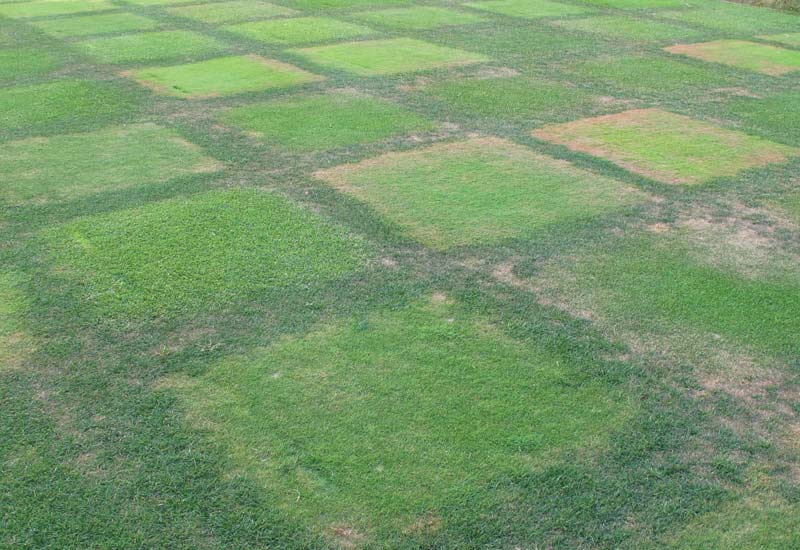
Photo by Jada Powlen
A two-year field study evaluated the total water needs of six cool-season fairway species: creeping bentgrass (Agrostis stolonifera), colonial bentgrass (Agrostis capillaris), perennial ryegrass (Lolium perenne), three Kentucky bluegrasses (Poa pratensis), two fine-leaf fescues (Festuca species) and two tall fescues (Schedonorus arundinaceus) maintained at two supplemental irrigation regimes on a silt-loam soil under a fixed-roof rainout shelter in West Lafayette, Ind.
The supplemental irrigation regimes were: 80% evapotranspiration (ET) replacement, applied three times per week, and a green-color-threshold response approach using digital image techniques. When an individual plot fell below the green-color threshold (55% green for year 1 and 65% green for year 2), 0.25 inch of water was applied for year 1, and 0.3 inch for year 2.
For the 75-day study period in year 1, the 80% ET replacement received a total of 10.9 inches of supplemental irrigation. The color-response-based regime required less water for all turf species, with the least irrigation — 2.8 inches — required by the tall fescues and one Kentucky bluegrass, compared with creeping bentgrass, which needed 3.75 inches.
For the 60-day study period in year 2, the 80% ET replacement received a total of 8.3 inches of supplemental irrigation. Similar species trends continued for the color-response-threshold regime: The tall fescues and one Kentucky bluegrass required the least — only about 3.6 inches — and creeping bentgrass required 7.5 inches.
This study demonstrates that significant supplemental irrigation savings could be achieved by alternative irrigation strategies such as a green-color-threshold response approach and/or maintaining species other than creeping bentgrass.
— Jada Powlen and Cale Bigelow, Ph.D., Purdue University, West Lafayette, Ind.
Editor’s note: An earlier version of this summary was published in the 2018 ASA-CSSA Meeting Abstracts, ASA and CSSA, Madison, Wis.
Teresa Carson is GCM’s science editor.